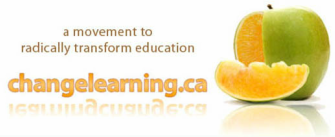|
Over 40 billion dollars a year is spent in Canada getting our children from Kindergarten to Grade 121, yet over 40% of our youth fail to meet expected performance levels for basic subjects2 and almost one quarter of our children fail to graduate with their peers3. Students are disengaging grade by grade4, a trend illustrated by their increasing dislike for school5, declining academic achievement6 and rising rates of teenage depression7 and suicide8. Contrary to Canada’s most fundamental democratic tenets, minority and low-income children are the hardest hit9. Public opinion polls show confidence in the education system is at an all-time low10, home schooling is growing exponentially and the number of children attending private schools has doubled in the past 25 years11. An ever increasing number of factors point to a deeply flawed system that is failing our youth and our society. We see this failure reflected daily on our streets, in our malls and in the news. Learn more about signs of trouble.
How Did We Get Here?
Our schools are falling short—not because of poor teaching, apathetic youth or lack of rigorous standards but because the educational system of today was built for the needs of a bygone era, using the knowledge available at the time it was created. Significant changes in family, work, technology and culture have radically shifted the context for education in this country, yet the system remains essentially the same. Developments in neuroscience, brain imaging and anthropology now provide concrete answers about how the human brain actually learns and matures, but this relatively recent knowledge is not reflected within the existing educational structure or classroom practices. Decades of “educational reform” calling for higher standards and a return to the basics have served only to drag an already out of date system even further in the wrong direction. These types of simplistic and short term bandages directly contradict what we really know about the circumstances and opportunities that children need to learn, flourish and succeed. As a result, many students are frustrated and disengaged, parents are confused and disappointed, and educators are defensive and worn out. Learn more about the history of education. Why Hasn’t Anything Changed? Because changing large systems is difficult. Because when you grow up and succeed within the traditional system, it’s hard to see what’s wrong and it’s even harder to imagine that we can do it any other way. Because traditional schooling models are entrenched in our collective psyches and in our culture and as a society we have invested a great deal in keeping them the way they are. And because it’s easier to rally behind the very loud voices of “educational reform” than to dig deeper, think longer term and contemplate a complete re-envisioning of the system as we know it. Perhaps we have also failed to recognize that what happens to our children affects us all. Chronic educational underperformance seriously threatens Canada’s social cohesion, economic prosperity, democratic principles and quality of life. The cost of doing nothing grows with each child that leaves the education system without having challenged the limits of his or her own possibility. If we continue in failing to maximize the potential of every child, we can never hope to meet the significant challenges we face entering the 21st Century – climate change, global inequities, rising rates of violence, to name a few. We will pay for our inaction with new prisons, higher expenditures for social assistance and the increased costs of maintaining a fragile public safety. Lear more about barriers to change and the need for action. We know two things with absolute certainty; 1) that in 20 years, even 10, our world will look very different, and 2) that the decisions and actions we take today will significantly shape our emergent future. — Eric Young, in Getting to Maybe: How the World Is Changed How Do We Fix It? Our current model of education is less than 200 years old. Human beings have been learning and progressing ever more successfully for millions of years. We now have the knowledge about human learning and development that we need to create a system that would provide every child with the opportunity to succeed, to thrive and to reach their full potential as engaged and active citizens in their homes, their communities and their world. What we need is public awareness, political will and collective action. We hope this site will generate all three. Join us. Learn more about taking action. |
The broader and more diverse the experience when very young, the greater are the chances that, later in life, the individual will be able to handle open, ambiguous, uncertain and novel situations . Featured VideoPrograms at Work |
- Canadian Education Statistics Council, Education Indicators in Canada: Report of the Pan-Canadian Education Indicators Program 2005 (Ottawa: Canadian Education Statistics Council, 2006; Statistics Canada Catalogue 81-582-XIE), Available at http://www.statcan.ca/english/freepub/81-582-XIE/81-582-XIE2006001.htm
- Canadian Education Statistics Council, Education Indicators in Canada.
- Canadian Education Statistics Council, Education Indicators in Canada.
- The McCreary Centre Society, Healthy Connections: Listening to BC Youth. Highlights From the Adolescent Health Survey II (Vancouver: The McCreary Centre Society, 1999).
- William Boyce, Young People in Canada: Their Health and Well-being (Ottawa: Health Canada, 2002).
- Canadian Education Statistics Council, Education Indicators in Canada.
- According to Health Canada and Statistics Canada.
- The Kelty Patrick Dennehy Foundation, Teenage Depression and Suicide—The Facts [website resource]. Available at http://www.thekeltyfoundation.org/depression-facts.htm
- Canadian Education Statistics Council, Education Indicators in Canada.
- CTV’s Canada AM, Canada AM Education Survey (conducted Sept. 6, 2006). [8% of respondents gave Canada’s education system an “A” rating.]
- Claudia R. Hepburn, “The Case for School Choice: Models From the United States, New Zealand, Denmark, and Sweden,” Critical Issues Bulletin (Vancouver: The Fraser Institute, Sept. 1999). Available at http://www.fraserinstitute.ca/shared/readmore.asp?sNav=pb&id=215



